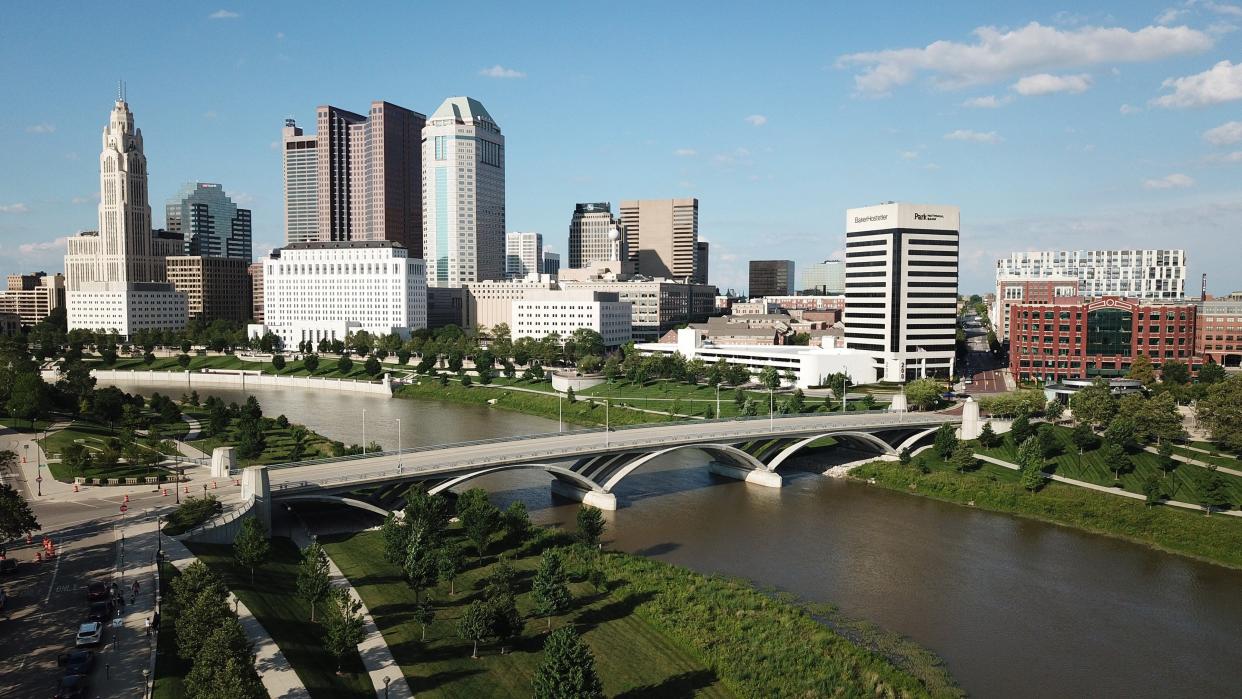Census: Columbus among just six of top 15 cities to gain population in COVID's first year

Columbus gained an estimated 668 residents between July 2020 and 2021, the U.S. Census Bureau estimates, making it one of just six of the nation's 15 largest cities to gain population during the first year of the COVID-19 pandemic.
Columbus remained the 14th largest city in the nation with an estimated total population of 906,528 as of July 1, 2021, the Census estimated.
More: Perry County woman reaches consent agreement over fake COVID-19 vaccination card sales
Eight of the 10 largest cities in the U.S. lost population during that time, with New York, Los Angeles and Chicago leading the way. Between July 2020 and July 2021, New York lost more than 305,000 people, while Chicago and Los Angeles contracted by 45,000 residents and 40,000 people, respectively.
San Francisco suffered the largest rate of decline, losing almost 55,000 residents, or 6.3% of its 2020 population, the highest percentage of any U.S. city.
The population estimates released Thursday by the U.S. Census Bureau capture a time early in the pandemic and don’t reflect changes since last summer. Whether the virus has permanently altered the urban landscape of America remains an open question.
Brookings Institution demographer William Frey said he believes the population declines in most of the largest U.S. cities from 2020 to 2021 have been “short-lived and pandemic-related.”
Among the 10 largest U.S. cities, only San Antonio and Phoenix gained new residents, but they added only about 13,000 people each, or less than 1% of their populations, according to the bureau's 2021 vintage population estimates.
Other besides Columbus in the 15 largest cities that gained population include Fort Worth, Texas (12,916); Jacksonville, Florida (4,151); and Austin, Texas (1,056).
Columbus' relatively slow growth during the pandemic may be a temporary braking. The city gained more than 100,000 people between 2010 and 2020.
"We may see twice that in the next ten," Columbus Mayor Andrew J. Ginther said on Thursday, citing the Intel project in New Albany and the effect on the city and region.
"Growth is coming. It was going to happen without Intel. It's going to happen faster because of Intel. It's going to happen quickly," said Ginther, adding that reinforces a sense of urgency for more housing.
In March, the Census Bureau released estimates for metro areas and counties showing changes from mid-2020 to mid-2021. That showed Franklin County's population dipped slightly, by 2,689 people, from an estimated 1,324,103 on July 1, 2020 to 1,321,414 on July 1, 2021.
The estimates released Thursday offer a more granular perspective. For instance, the March data showed metro Dallas had the largest population gain of any metro area in the U.S., adding more than 97,000 residents, but Thursday's estimates show the city of Dallas lost almost 15,000 residents. The growth occurred in Dallas suburbs like Frisco, McKinney and Plano.
Reasons for population changes vary from city to city, driven by housing costs, jobs, births and deaths. The pandemic and the lockdown that followed in spring 2020 made living in a crowded city less appealing for a time, and those who could leave — workers who could do their jobs remotely, for example sometimes did.
Dispatch reporter Mark Ferenchik contributed to this report.
This article originally appeared on The Columbus Dispatch: Columbus among 6 of top 15 U.S. cities to gain residents during COVID

